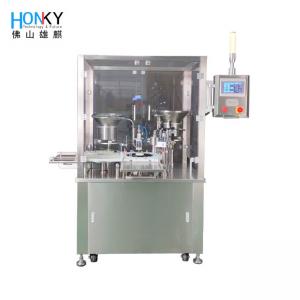

Add to Cart
AC 220V Liquid Vial Filling Machine XQX2 Series Ceramic Pump
Automatic Vial Filling Machine Injection Vial Filling Machine Liquid Vial Filling Machine
Characteristic
1- Small size, layout size, functional module layout is reasonable
and complete, easy to maintain;
2- the two major functions of filling and capping are in-line
production, continuous operation, without manual assistance;
3- The operation of the machine actually only needs one person to
do the job (including feeding and receiving), which can greatly
save the cost of employment and the one-time occupation of
equipment
Technical data
Target Products | Penicillin bottle |
Manufacturing speed | 28-35 PCS / minute |
Power | AC 220V 50-60Hz / 1.5kw |
Air range | 0.5-0.7Mpa |
Product display
The compatible design combines the filling, cap loading, and crimps in one small space.
Filling, cap loading and crimping.
Finish product display.
Advantages for using the ceramic pump:
1. Low Friction, Increased Packing Life
2. Extreme Wear Resistance
3. Increased Corrosion Resistance
4. Improved Anti-Galling Surface
Application area
1. ODM and OEM products design;
2. Automatic manufacturing line design;
3. Cosmetic product packing;
4. Pharmaceutical and bio-reagent product packing;
5. Laboratory Liquid dispensing;
6. Lithium Battery Liquid dispensing;
7. Ceramic pump and ceramic pump part design;
8. Other area's material filling;
Q & A
Q: Do you offer OEM services, I am a distributor from overseas?
A: Yes, we can offer both OEM Services and technical support.
Welcome to start your OEM business.
Q: How about the after-sales service?
A: The machine is a 1-year warranty. And we offer lifetime
after-sale service and technical support.
Q: What are your Installation Services?
A: Installation Services are available with all new machine
purchases. We will provide the user manual and videos to support
installing, debugging, operation of the machine, which will
indicate to you how to use this machine well.
Q: What info will be needed to confirm machine models?
A: 1.The material status.
2. Filling range.
3. Manufacturing speed.
4. Requirements for the production process.
